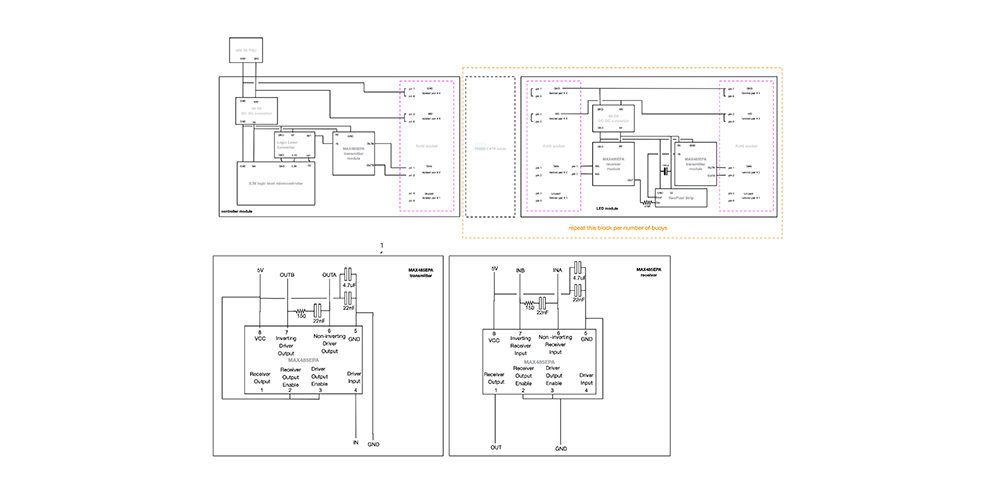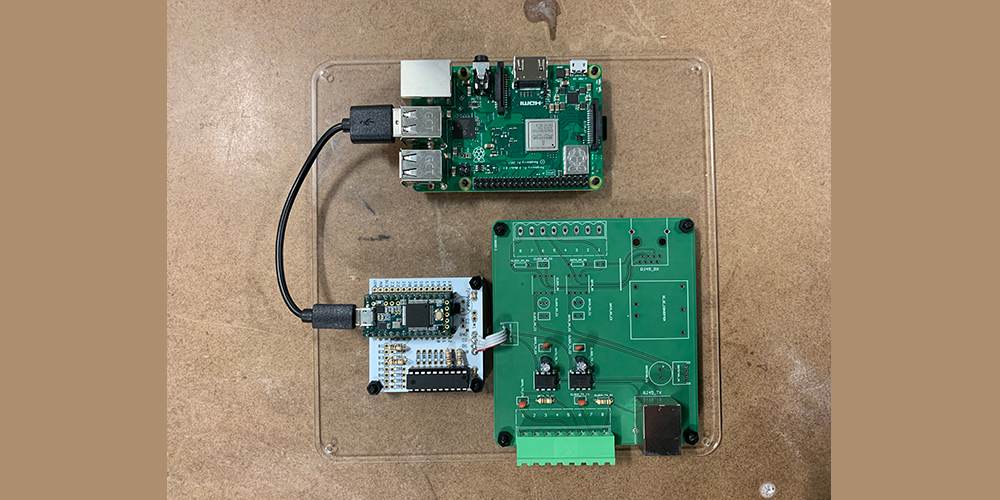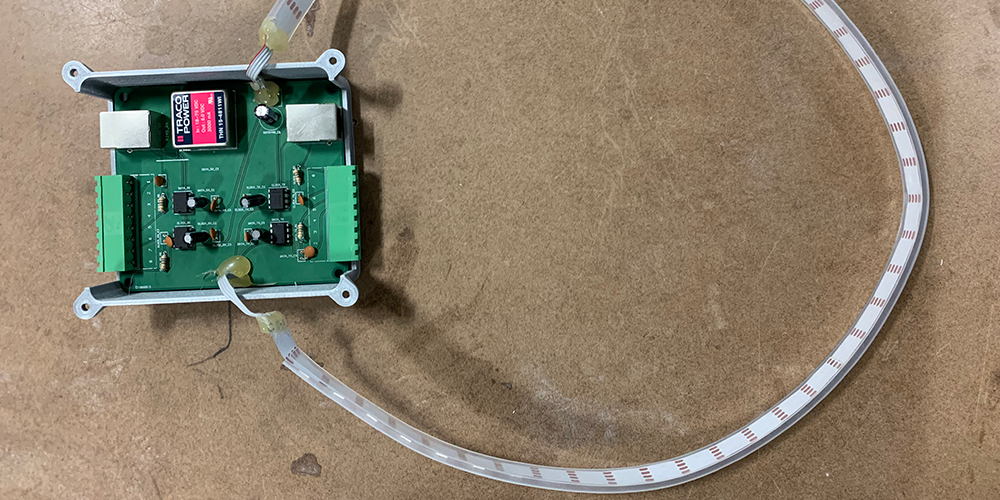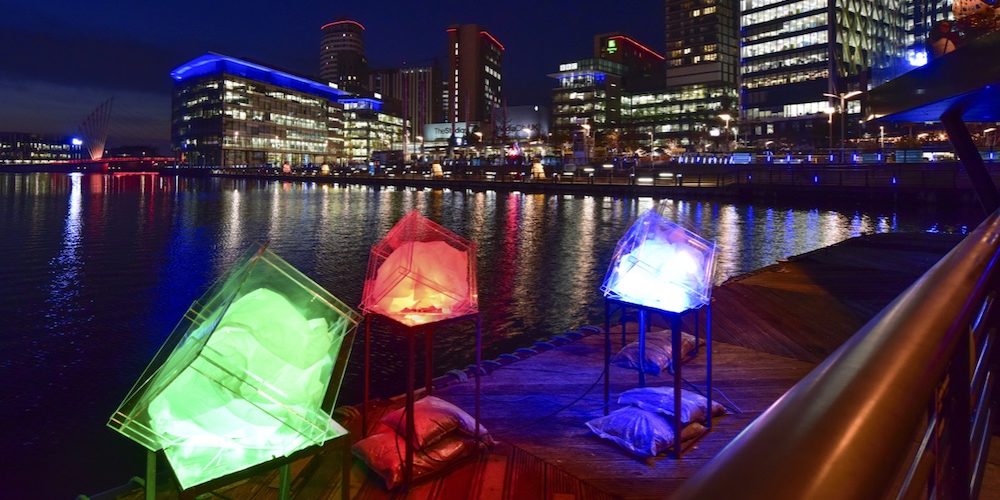Illuminim
Illuminim is an interactive light-based artwork featuring up to 10 floating illuminated buoys that collectively create patterns of light in response to audience interaction.
It was commissioned for and launched at Lightwaves 2018 – a free interactive light festival hosted by Quays Culture at Salford Quays, home of MediaCityUK – “showcasing inspiring digital light art and illuminating the public spaces for an unforgettable 10 days, from Friday 7 Dec until Sunday 16 Dec 2018”.
The artwork consists of 10 individual 0.7×0.7x1m units – a welded metal frame with an acrylic lantern fixed to the top – connected to each other via power/data cables. For Lightwaves 2018 the units were positioned relatively close to each other on a floating deck but the ~50m of cable allows them to be spread out more widely. A double-layered, waterproof power and control unit contains a 48VDC PSU (400W), Raspberry Pi, and 4G router. Audience interaction is via a mobile app allowing the public to control the artwork via their personal devices – by tapping out a rhythm on their screen which is then stored and reproduced in the flashing patterns of the lanterns. Alternatively an iPad on a stand can be placed by the work to allow the public to interact.
The project was headed by Manchester-based artist (and then Barclays Salford Eagle Lab Technical Manager) James Medd. I was part of the project development team alongside Gemma Latham, Callum Kirkwood and Sophie Bullock & Anna Horton of One Five West.
Aside from delivering a ‘hands-on’ Animated LED Specs workshop at Barclays Salford Eagle Lab as part of the project’s outreach programming, my main role was technical development – and specifically the electronics.
I’d previously done some R&D for the Junk Yard Golf Club using multiple ToF distance sensors to drive animations on LED strips – and this seemed a good fit. So I adapted key aspects of that project – Power over Ethernet (PoE) and more robust Serial communication over long cable distances via MAX485 ICs (low-power transceivers for RS-485 and RS422 communication). After some initial prototyping and thorough testing I worked up circuit schematics for the electronics required in each buoy – as the basis for the design and manufacture of a custom PCB. I also advised on suitable components, cabling and connectors and preferred suppliers – and generally pitched in as best I could though I had heavy schedule at the time.



